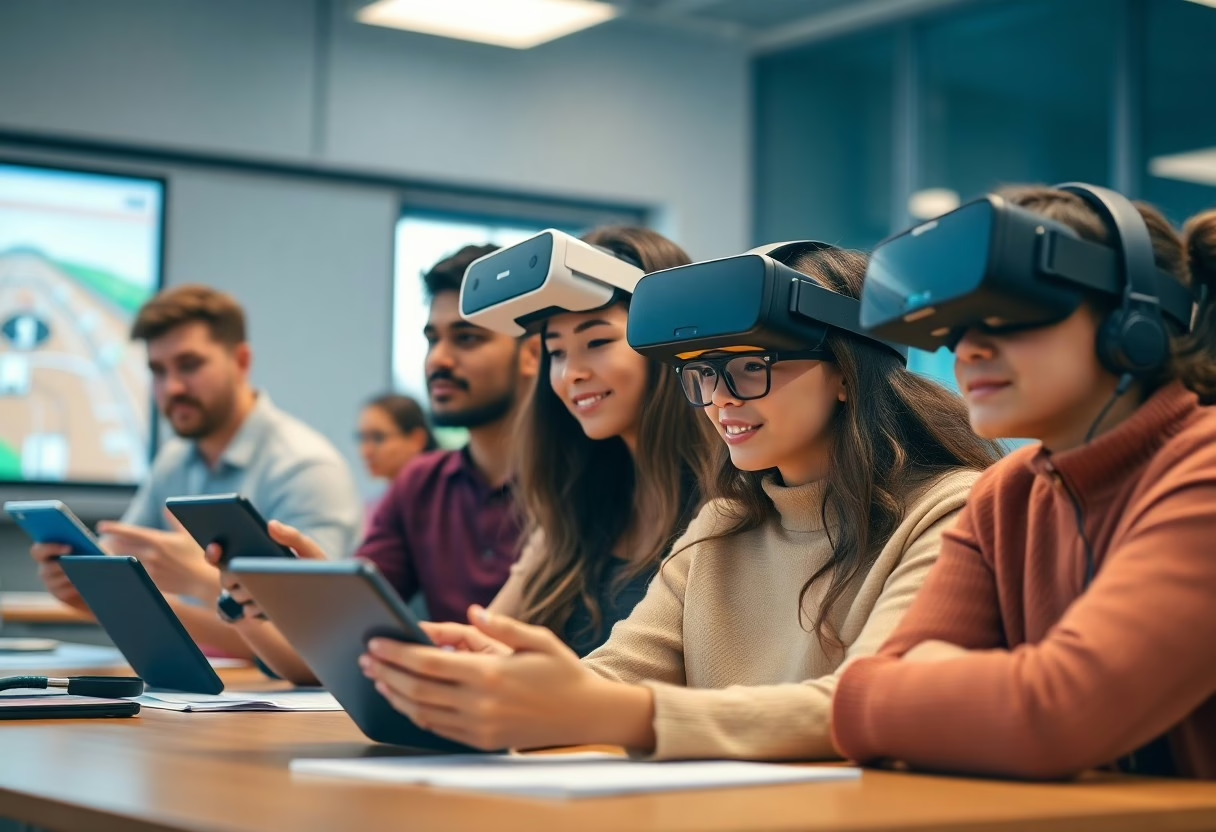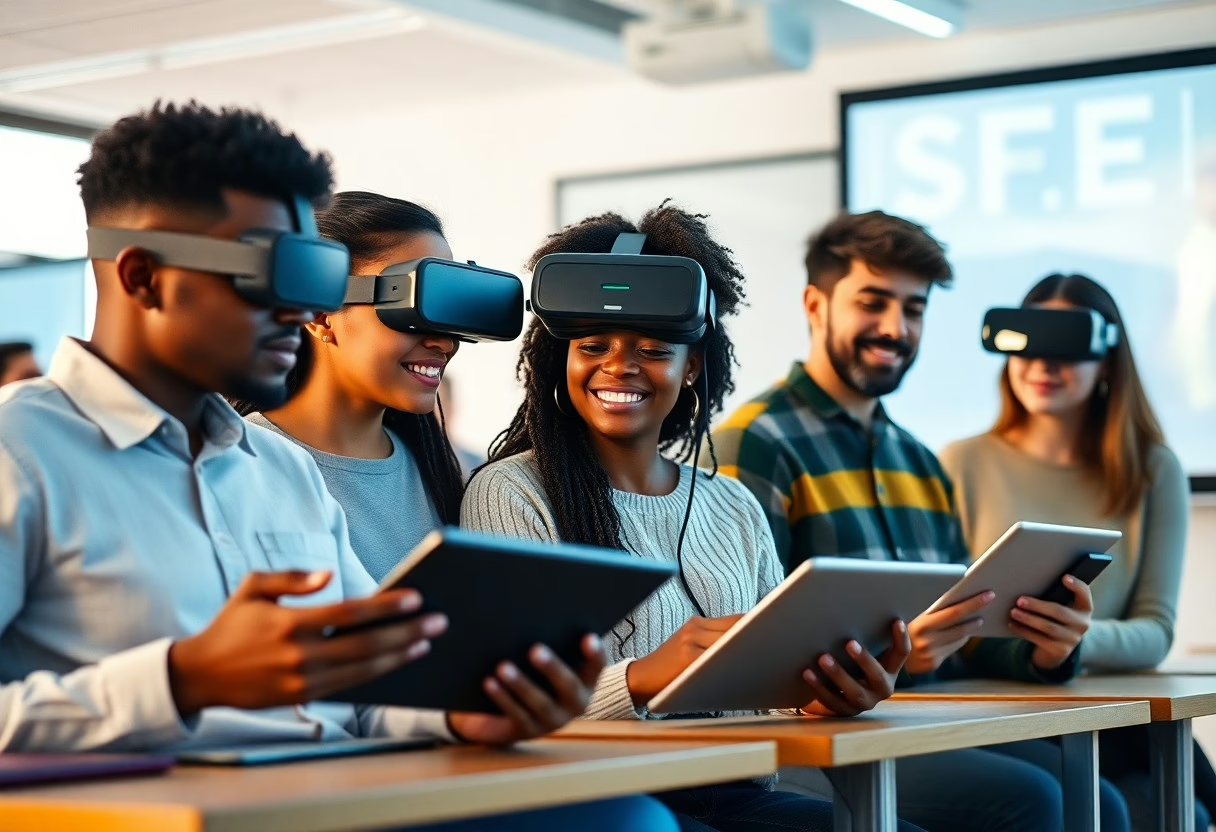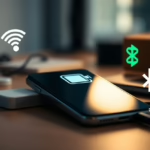Innovation in technology is transforming how you acquire knowledge and skills, making learning more accessible and engaging than ever before. With tools like online courses, interactive apps, and virtual classrooms, you can now tailor your educational experience to suit your unique preferences and pace. In this post, you will discover practical strategies to harness the power of technology in your learning journey.
The Digital Classroom Revolution
The digital classroom transforms every aspect of learning, turning traditional methods on their head to create engaging, interactive environments. Virtual tools, multimedia resources, and global classrooms have redefined accessibility, allowing you to learn from anywhere and at any time. This evolution encourages collaboration across borders, breaking down geographical barriers, and fostering a richer educational experience.
E-learning platforms have surged in popularity, reflecting a shift toward self-directed education. You have access to vast libraries filled with courses on almost every subject imaginable; platforms like Coursera and Udemy offer chances to gain knowledge directly from industry experts and top universities. By providing flexible schedules and pacing tailored to your needs, e-learning remains an attractive option for both personal and professional development. Incorporating technology into traditional education enhances the learning experience, allowing for a blend of face-to-face interaction and digital resources. Classrooms equipped with smartboards and tablets enable real-time feedback and interactive lessons, while learning management systems streamline communication between educators and students. With tech-driven resources, you can receive instant feedback, customize your learning path, and explore interactive simulations that elucidate complex topics.
Brain Science Meets Technology
As neuroscience uncovers the complexities of how your brain processes information, technology has stepped in to enhance these findings. This intersection has birthed advanced learning frameworks that personalize education experiences, targeting your unique cognitive patterns. The focus is shifting to how technology can stimulate and optimize your brain’s inherent learning capabilities. Interactive multimedia, including videos, simulations, and virtual classrooms, engages multiple senses, significantly improving information retention. By inviting you to actively participate rather than passively consume content, these tools create a rich tapestry of learning experiences that cater to different learning styles. Research indicates that your brain is more likely to remember material when it’s presented in an interactive format. Gamification leverages game mechanics to promote active learning and deeper engagement. Through rewards, challenges, and competition, it transforms traditional educational paradigms into interactive experiences. Studies show that engaging in gamified learning boosts motivation, with students often retaining 60% more information compared to standard methods. Platforms like Duolingo exemplify this concept, turning language learning into an addictive game where you earn rewards as you progress. Research from the University of Colorado found that students participating in gamified learning displayed a 20% higher engagement rate, which translates to improved learning outcomes. This playful approach encourages you to push boundaries, fostering a mindset where exploration and creativity thrive.

Personalized Learning Through Data
Data-driven insights are transforming education by enabling personalized learning experiences that cater to individual student needs. By analyzing various data points, such as academic performance, learning styles, and engagement levels, educators can tailor their approaches to ensure that each learner receives the support they require for success.
Learning analytics leverages data to provide actionable insights into student performance. By monitoring metrics such as assignment completion rates and assessment scores, you can identify areas where students struggle and adjust instructional strategies accordingly. This targeted approach not only enhances student outcomes but also fosters a more engaging learning environment. Adaptive learning technologies utilize sophisticated algorithms to create customized educational experiences. These tools assess your progress in real-time, allowing the curriculum to adjust based on your strengths and weaknesses. By delivering content at your level of understanding, adaptive learning ensures you remain challenged yet not overwhelmed. Platforms like DreamBox and Knewton analyze your interactions and performance to modify lessons dynamically. These platforms emphasize mastery through tailored pathways, meaning if you’re struggling with a concept, you’ll receive additional resources and practice in that area before moving on. This ongoing assessment builds your confidence and helps solidify knowledge by addressing gaps immediately.
Overcoming Digital Barriers
Achieving equitable access to educational technology remains a significant challenge. While advancements have reshaped learning experiences, disparities in resources create barriers for students in underprivileged communities. Students in underprivileged areas often face technological barriers, such as limited internet access, lack of devices, and insufficient technical support. According to a 2021 report from the National Center for Education Statistics, nearly 17% of students in low-income households reported not having adequate internet connectivity for remote learning. Various initiatives aim to enhance digital literacy and bridge the tech gap for disadvantaged students. Organizations like Code.org and the Digital Promise’s Verizon Innovative Learning initiative provide resources, training, and devices to underserved communities.
Practical Implementation Strategies
Integrating technology into your learning process requires specific strategies to ensure an enriching experience. Utilizing online resources and engaging with virtual communities expands your access to knowledge and collaborative learning. Websites like Coursera, Udemy, and Khan Academy offer courses across diverse subjects. Joining forums or social media groups related to your interests enables you to connect with experts and like-minded learners. Your learning space significantly influences your ability to absorb information effectively. Creating a tech-savvy environment means equipping your workspace with reliable devices, high-speed internet, and productivity apps to enhance focus. Consider tools like noise-canceling headphones or software for time management to minimize distractions. To build a truly effective learning environment, focus on ergonomics and accessibility. Arrange your desk to maintain comfort during extended study sessions—comfortable seating, proper screen height, and adequate lighting can enhance clarity and reduce strain. Utilize productivity tools such as Todoist or Trello to organize tasks and set goals. Furthermore, explore interactive tools like digital whiteboards and collaborative platforms to enrich group study experiences.
Conclusion
You can embrace the myriad of technological tools available to enhance your learning experience. By utilizing online resources, interactive platforms, and digital collaboration, you can tailor your education to fit your unique style and pace. Engaging with technology not only makes learning more accessible but also allows you to connect with a global community of learners. As you navigate this evolving landscape, consider how you can incorporate technology to optimize your educational journey and prepare for future challenges in an increasingly digital world.



